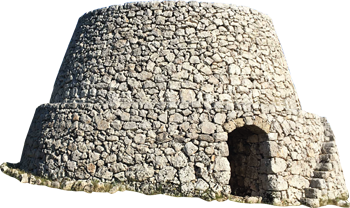Salento lies east of the Apulia region, in the deep south of Italy. Warm and friendly and preserved by a centuries-old isolation, it has kept its genuine folklore and ancient wine-growing tradition alive. As the heel of the boot-shaped Italian peninsula as well as its easternmost part – from the beautiful cliffs of the Adriatic sea to the gentle, sandy beaches of the Ionian sea – Salento boasts the highest number of DOC wines produced in Apulia. Acres of vineyards alternate between olives groves enclosed by low dry-stone walls and Mediterranean shrubs. Its thick vegetation, fruits and flowers were a source of inspiration for the skilful craftsmen working in the city of Lecce during the Baroque period, who richly embellished churches, convents and palaces with the symbols of the age, thus representing – or invoking – the generosity and fertility of a friendly and rich land. It is thanks to this natural and architectural beauty that Salento is now one of the most popular destinations in Italy. Its natural capital is Lecce, which has retained its historical and cultural identity more than any other city of Apulia. Named “the Florence of southern Italy” for its beautiful monuments, Lecce is renowned for its Baroque architecture and sculptures, which spread throughout the province since the 16th century thanks to a malleable, compact, smooth, honey-coloured limestone known as “Lecce stone”, which is used to enrich streets, balconies, palaces and churches. Local artisans, equipped with planes and chisels, still use Lecce stone in their workshops to craft sculptures and other precious items. One of the symbols of Lecce is the recently restored Chiesa di Santa Croce (Church of the Holy Cross, 1549), which is near Sant’Oronzo square, in the very heart of the city.


